DESIGN SPOTLIGHT: THE PERFECT HOLIDAY HOUSE
18th May 2022We have several interesting holiday house projects in the practice just now, including an off-grid bothy, so we’ve been looking around at examples of holiday houses to assess what makes them successful, or the opposite. For us architects, success means that they demonstrate good solutions to some of the important design issues.
These solutions vary depending on location, but for me, it’s about designing a house that feels good to be in, looks great, isn’t cluttered, and makes the most of its relationship with its environment. It must also work efficiently, enough bathrooms, a trouble-free hot water and heating system, and easy-to-manage appliances. It should be somewhere that you can breathe a sigh of relief in when you enter. Crucially, it must have the right spaces to relax in, too.
Whether it’s somewhere to suit multiple generations, a remote wifi-free cottage, or a practical place built to generate income, holiday house design requires a careful and sensitive design approach. In my opinion, the design of a standard 3 or 4-bedroom family home doesn’t necessarily work as a successful holiday home.
As a family we’ve tried many holiday house models and all have contributed to a large bank of happy memories. However, they haven’t all been successful at housing a big group of holidaymakers. One memorable place sleeping seven of us (grandparents included) had us crammed into a 32m2 ski chalet, which was more like a Japanese capsule hotel pod – except with wet salopettes crowding out your bunk. Another was a borrowed Portuguese mansion as a break from caravan life while building our own family home, which was rather lovely. And we had a chilly but memorable stay in a rambling farmhouse with nowhere quite right to escape to read a book in peace or warmth.
We’ve taken notes over the years about the subtle nuances and sensitivities of what makes a holiday house successful.
Caring Wood, the 2017 RIBA House of the Year, interests me both aesthetically and because of the client’s bold ambition to create a multi-generational family home. It wasn’t built as a holiday home, but this reimagined English country home focuses on keeping all age groups happy under one roof and so would make a great holiday let.
Deborah Saunt, one of the RIBA judges that year, says, ‘Here we find a family enjoying each other’s time and company, but also enabling timeless layers of support to emerge between generations. Grandparents and grandchildren exchanging experiences and enlivening each other’s sense of self, parents finding a place to catch up alone as children play. Siblings together with cousins, building the foundation for mutual support for years to come, the network that builds a strong society of mutual respect.’
Many of the successful design principles and in particular how the plan is arranged, with various sections that are apart but also together, could be transferred to the design of a large holiday house.

Caring Wood, Photograph © James Morris
Another key point about Caring Wood is its successful placing in the landscape and architectural reference to the local vernacular. It feels modern and exciting yet obviously references the oast houses of the Kent countryside around it.
Attention to how your house sits within its landscape is not only important for gaining planning permission, it’s also a key part of designing a house that feels right and of its place. While this might seem far from your thoughts when you’re planning your dream home, attention to these subtleties is always part of a good architect’s thought process. The Scottish island holiday house project below had permission for a much more modest house when our client purchased the land. But through careful design and collaborative discussions with the planning department about the appropriate vernacular architecture, we were able to increase the size of the house significantly and therefore make a much more exciting project happen.
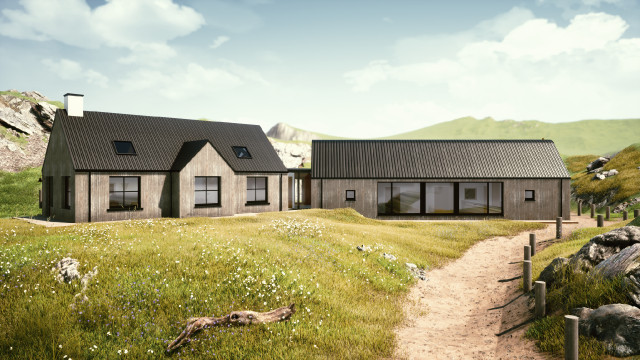
Scottish Island Holiday Home
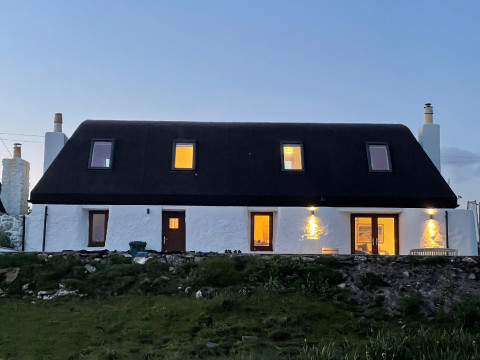
Tiree House – Example of the vernacular architecture on Tiree
If your ambition is to build a holiday house or houses or even renovate a country house into a boutique hotel, there are many things to consider. These include location, your market, your finances and planning and building warrant regulations. Equally and arguably more important than these practical issues is the holistic demonstration of that slightly intangible thing: your brand or the look and style that you want to create. We’re all for creating something which will stay in the mind of your guests forever (for the right reasons!) and will also keep your competitors at bay and the enquiries coming in. Often, it’s a just a few ‘wrong’ things in a holiday house that puts people off. And at the opposite end of the spectrum, getting the design and style basics just right will keep visitors booking. What is crucial from an architectural point of view, is getting those basics pinned down at the beginning of the design process.
Sustainable architectural methods and building with energy efficiency in mind are also key objectives for 21st-century holiday homes. We were lucky to help clients who are pioneers in energy efficiency convert two former dairy buildings into a pair of energy-neutral holiday homes in the Loch Lomond and Trossachs National Park. Both are attractive and spacious, with a strong sense of their former use while having exceptionally modern energy systems. A green lifestyle is a major selling point for these holiday cottages and the owners keep them fully booked with holidaymakers keen to take a break without impacting the planet.
Two of our holiday house projects below had very different brand or style requests; a newbuild Highland sporting lodge for a foreign investor and a Cape Cod style beach house on Arran for a retired couple. Each is strong in their execution of the brand or style objective, making them memorable in their own ways. What they have in common is intricate attention to the details of the style, elevating them design wise, and pushing them into the luxury house market. Both use the best quality materials and adhere without compromise to a unified architectural style that fits their place.
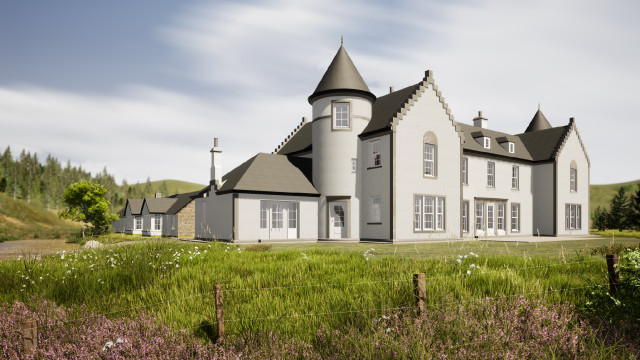
Sporting Lodge 1

Sporting Lodge 2
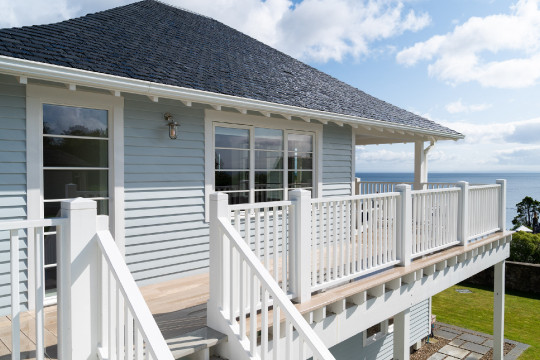
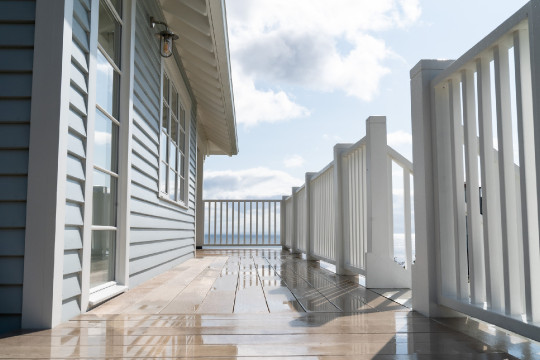
Arran House
If what gives you pleasure is a classic beach house in a wild landscape, we’re right with you. A car full of paddleboards and wetsuits headed for the beach is the instant wellbeing fix in my mind. When May arrives in Scotland, I get an unbelievable pull to leave the green landscape where I live and go to the sea, which is probably why I am writing this blog about holiday houses. In one of my beach house hunting moments, I was looking to New Zealand, which is similar in landscape to Scotland, and found award-winning Sand Dune House, below, in Brighton, Dunedin. It's one of many spectacular houses by Johnston Architects.
The design of this beach house ticks many of the great beach house boxes. The large expanses of glazing visually connect you to the stunning seaboard location from most of the rooms, allowing you feel closer and more connected to nature and the ever-changing skyscape. Its sophisticated detailing and simple forms are a visual joy, and the house sits harmoniously in the sand dunes. It’s relaxed and promotes relaxation.
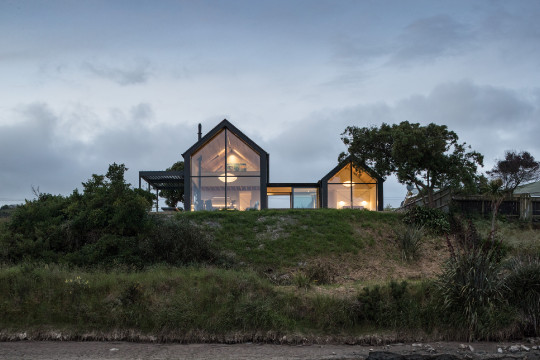
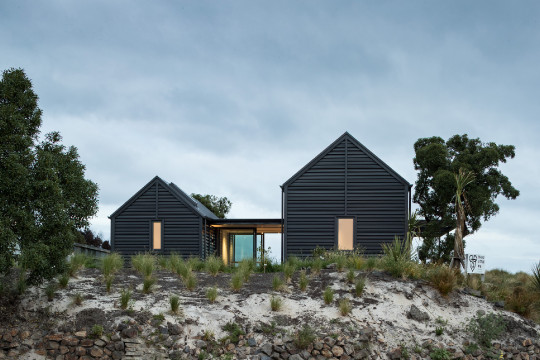
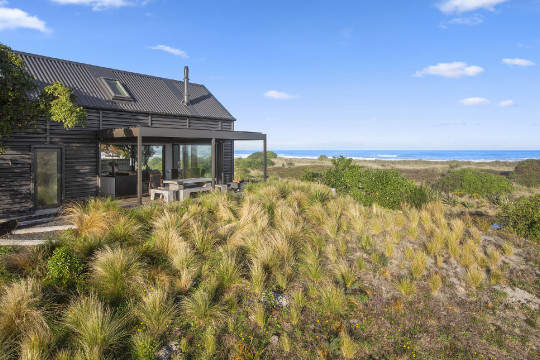
Sand Dune House, Photograph © Simon Devitt
No matter the style you want your dream holiday home to be designed in, there are a few subtle nuances and sensitivities that must be applied for it to be successful. It must create a sense of wellbeing in whoever is staying in it. It must fit its purpose and easily accommodate the number of people it’s built for. It should be robust with spacious living areas as well as places to escape to and quietly contemplate a view or a book. Its design must flow well and connect the interior with its surroundings. It must work – practicalities should be barely noticeable because they just do their job. And while a holiday house can be exciting architecturally, build with imagination and creativity, it’s rare that a holiday house should be extreme – there must be elements that are familiar, that place it in its time and in its space.
Got a dream holiday house in mind? Give us a call on 01360 661144 or email mail@thomasrobinsonarchitects.co.uk
- Architects: James Macdonald Wright and Niall Maxwell Macdonald Wright Architects
- Photographs: James Morris Home - James Morris
- Read more: Caring Wood (architecture.com)
- Architect: Thomas Robinson Architects
- Photographs: Ashley Coombes Commercial Photographer Scotland - Ashley Coombes Epic Scotland
- Read more: Scottish Island Holiday Home | Sea View House | Glasgow Architects - Thomas Robinson Architects
- Photograph: Fiona Robinson
- Architect: Thomas Robinson Architects
- Photograph: Ashley Coombes Commercial Photographer Scotland - Ashley Coombes Epic Scotland
- Read more: Refurbishment - Gartocharn - Thomas Robinson Architects
- Check (lochlomondholidaycottage.com) for details and to book.
- Architect: Thomas Robinson Architects
- Photograph: Ashley Coombes Commercial Photographer Scotland - Ashley Coombes Epic Scotland
- Read more: Sea Views New Build Home, Isle Of Arran | Contemporary Architecture - Thomas Robinson Architects
- Architect: Thomas Robinson Architects
- Photographs: Ashley Coombes Commercial Photographer Scotland - Ashley Coombes Epic Scotland
- Sporting Lodge 1: Luxury Scots Baronial Sporting Lodge - Thomas Robinson Architects
- Sporting Lodge 2: New Build Shooting Lodge - Thomas Robinson Architects
- Architects: Johnston Architects Sand Dune House Dunedin | Johnston Architects
- Photographs: Simon Devitt - International Photographer of Architecture - Home Page
- Read more: Little Brighton Beach House (nzia.co.nz)
